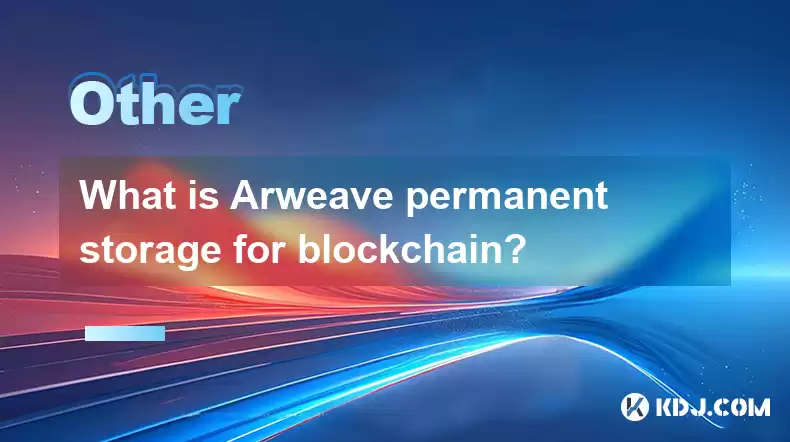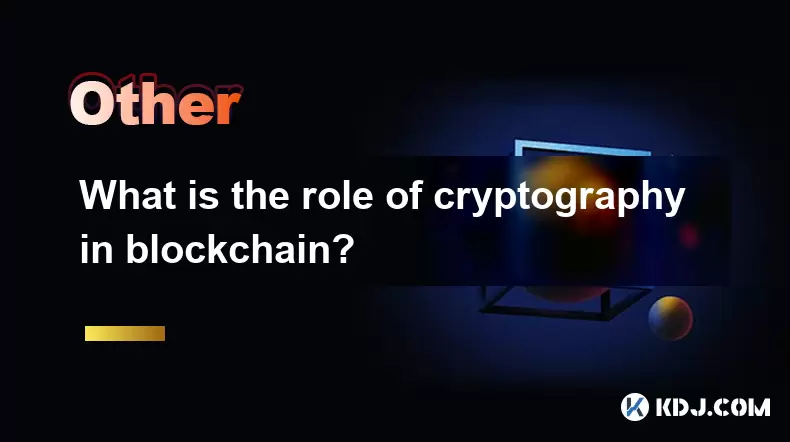-
 Bitcoin
Bitcoin $113900
0.47% -
 Ethereum
Ethereum $3491
-0.42% -
 XRP
XRP $2.876
-1.87% -
 Tether USDt
Tether USDt $1.000
0.03% -
 BNB
BNB $750.4
-0.49% -
 Solana
Solana $161.3
-1.76% -
 USDC
USDC $0.9999
0.01% -
 TRON
TRON $0.3242
-0.91% -
 Dogecoin
Dogecoin $0.1985
-0.19% -
 Cardano
Cardano $0.7241
1.49% -
 Hyperliquid
Hyperliquid $38.05
0.56% -
 Stellar
Stellar $0.3896
2.92% -
 Sui
Sui $3.442
0.61% -
 Chainlink
Chainlink $16.18
0.92% -
 Bitcoin Cash
Bitcoin Cash $541.0
0.51% -
 Hedera
Hedera $0.2427
2.67% -
 Ethena USDe
Ethena USDe $1.001
0.03% -
 Avalanche
Avalanche $21.39
-0.68% -
 Toncoin
Toncoin $3.669
2.25% -
 Litecoin
Litecoin $109.5
0.95% -
 UNUS SED LEO
UNUS SED LEO $8.966
0.11% -
 Shiba Inu
Shiba Inu $0.00001218
0.77% -
 Polkadot
Polkadot $3.598
1.23% -
 Uniswap
Uniswap $9.164
1.14% -
 Monero
Monero $297.7
1.21% -
 Dai
Dai $1.000
0.00% -
 Bitget Token
Bitget Token $4.328
0.84% -
 Pepe
Pepe $0.00001047
1.05% -
 Cronos
Cronos $0.1329
0.70% -
 Aave
Aave $257.6
1.03%
What is Arweave permanent storage for blockchain?
Arweave offers permanent, decentralized storage for blockchain apps, ensuring data immutability and cost-effectiveness with a one-time AR token payment.
Apr 14, 2025 at 12:08 am

Arweave is a decentralized storage network that offers permanent data storage solutions for various applications, including those within the blockchain ecosystem. The concept of permanent storage is crucial in the blockchain world, where data integrity and availability over long periods are essential. In this article, we will explore what Arweave permanent storage is, how it works, its benefits for blockchain applications, and how to use it.
What is Arweave?
Arweave is a protocol and network designed to store data in a way that is both permanent and decentralized. It uses a unique consensus mechanism called Proof of Access, which incentivizes miners to store and retrieve data over long periods. Unlike traditional cloud storage solutions, Arweave ensures that data remains accessible and unchanged indefinitely.
The core idea behind Arweave is to create a blockweave instead of a blockchain. In a blockweave, each new block references not only the previous block but also a randomly selected block from the past. This structure enhances the network's security and makes it economically viable to store data permanently.
How Does Arweave Permanent Storage Work?
Arweave's permanent storage solution operates on the principle of sustainability and permanence. When data is uploaded to Arweave, it is broken down into smaller chunks and distributed across the network. Each chunk is then stored by multiple miners, ensuring redundancy and availability.
The network uses a native cryptocurrency called AR to incentivize miners. When data is uploaded, the user pays a one-time fee in AR, which is then distributed to miners over time as they continue to store and provide access to the data. This payment model ensures that miners have a financial incentive to maintain the data indefinitely.
Benefits of Arweave Permanent Storage for Blockchain Applications
Arweave's permanent storage offers several advantages for blockchain applications. One of the primary benefits is data immutability. Once data is stored on Arweave, it cannot be altered or deleted, which is crucial for blockchain applications that require tamper-proof records.
Another benefit is cost-effectiveness. Traditional blockchain solutions often require ongoing fees to maintain data on the network. With Arweave, a single payment covers the cost of permanent storage, making it more economical for long-term data storage needs.
Additionally, Arweave's decentralized nature enhances data availability and resilience. Since data is stored across multiple nodes, it remains accessible even if some nodes go offline. This feature is particularly important for blockchain applications that need to ensure data availability over extended periods.
How to Use Arweave Permanent Storage for Blockchain Applications
Using Arweave for blockchain applications involves a few straightforward steps. Here’s a detailed guide on how to get started:
Install the Arweave Wallet: First, you need to install the Arweave wallet. You can download it from the official Arweave website. The wallet is available for various platforms, including desktop and mobile devices.
Fund Your Wallet: To use Arweave, you need to have AR tokens in your wallet. You can purchase AR tokens from cryptocurrency exchanges that support them. Transfer the tokens to your Arweave wallet address.
Prepare Your Data: Before uploading, prepare the data you want to store permanently. This could be any type of data relevant to your blockchain application, such as transaction records, smart contract code, or other essential documents.
Upload Data to Arweave: Use the Arweave wallet to upload your data. Navigate to the "Upload" section of the wallet, select the file you want to store, and confirm the transaction. The wallet will prompt you to pay the required AR tokens for permanent storage.
Retrieve Data: To access the stored data, you can use the unique transaction ID provided by Arweave after the upload. You can share this ID with others who need to access the data, or you can retrieve it yourself using the Arweave gateway.
Use Cases of Arweave in Blockchain
Arweave's permanent storage has found various applications within the blockchain ecosystem. One notable use case is storing blockchain archives. Many blockchain projects use Arweave to store historical data and transaction records, ensuring that this information remains accessible and verifiable over time.
Another use case is decentralized applications (dApps). Developers can use Arweave to store dApp data, such as user profiles, smart contract code, and application state. This approach enhances the dApp's resilience and ensures that critical data remains available even if the dApp's primary infrastructure fails.
Arweave is also used for non-fungible tokens (NFTs). Artists and creators can store their digital assets on Arweave, ensuring that the NFTs remain accessible and verifiable. This use case is particularly important for maintaining the integrity and provenance of digital art and collectibles.
Technical Considerations for Using Arweave
When integrating Arweave into blockchain applications, there are several technical considerations to keep in mind. One key aspect is data size and cost. The cost of storing data on Arweave depends on the size of the data. Larger files require more AR tokens, so it's essential to optimize data size before uploading.
Another consideration is data retrieval speed. While Arweave ensures permanent storage, the speed of data retrieval can vary depending on network conditions and the number of nodes storing the data. For applications that require fast data access, it may be necessary to implement caching mechanisms or use Arweave in conjunction with other storage solutions.
Finally, security and privacy are crucial considerations. While Arweave provides a high level of data integrity, users must ensure that sensitive data is encrypted before uploading. Additionally, understanding the network's consensus mechanism and how it impacts data availability is essential for ensuring the reliability of the storage solution.
Frequently Asked Questions
Q: Can Arweave be used for storing sensitive data?
A: Yes, Arweave can be used for storing sensitive data, but it's crucial to encrypt the data before uploading it to the network. This ensures that even if the data is publicly accessible, it remains secure and private.
Q: How does Arweave compare to other decentralized storage solutions like IPFS?
A: Arweave and IPFS both offer decentralized storage solutions, but they differ in their approach to permanence and incentives. Arweave focuses on permanent storage with a one-time payment model, while IPFS relies on a more dynamic, peer-to-peer network where data availability can vary over time.
Q: Is there a limit to the amount of data that can be stored on Arweave?
A: There is no inherent limit to the amount of data that can be stored on Arweave. However, the cost of storage increases with the size of the data, so practical limits may be determined by the user's budget and the network's capacity to handle large volumes of data.
Q: Can data stored on Arweave be deleted or modified?
A: No, data stored on Arweave cannot be deleted or modified once it is uploaded. This is a fundamental feature of Arweave's permanent storage solution, ensuring data immutability and integrity.
Disclaimer:info@kdj.com
The information provided is not trading advice. kdj.com does not assume any responsibility for any investments made based on the information provided in this article. Cryptocurrencies are highly volatile and it is highly recommended that you invest with caution after thorough research!
If you believe that the content used on this website infringes your copyright, please contact us immediately (info@kdj.com) and we will delete it promptly.
- Altcoins Most Searched: Hedera (HBAR) and the ETF Hype
- 2025-08-03 20:50:16
- Arbitrage Adventures: Creditcoin, Kaspa, and Chasing Crypto Profits
- 2025-08-03 20:30:16
- Claude HIVE & Code Agents: Faster Coding Revolution?
- 2025-08-03 20:50:16
- Trump Media, Bitcoin, and Crypto: A Surprising Alliance in the Making?
- 2025-08-03 21:30:16
- Shiba Inu's Bullish Reversal Hopes Amid Market Uncertainty: A Deep Dive
- 2025-08-03 21:30:16
- Shiba Inu's Struggle, Mutuum Finance's Rise, and Key Support Levels: A Crypto Deep Dive
- 2025-08-03 20:55:16
Related knowledge

What is the difference between on-chain and off-chain transactions?
Aug 02,2025 at 04:22pm
Understanding On-Chain TransactionsOn-chain transactions refer to digital asset transfers that are recorded directly on a blockchain ledger. These tra...

What is a node's role in a blockchain network?
Aug 03,2025 at 03:16pm
Understanding the Function of a Node in a Blockchain NetworkA node is a fundamental component of any blockchain network, acting as a participant that ...

What is the double-spending problem and how does blockchain prevent it?
Aug 02,2025 at 01:07pm
Understanding the Double-Spending ProblemThe double-spending problem is a fundamental challenge in digital currency systems where the same digital tok...

What is the difference between a blockchain and a database?
Aug 01,2025 at 09:36pm
Understanding the Core Structure of a BlockchainA blockchain is a decentralized digital ledger that records data in a series of immutable blocks linke...

How does blockchain handle scalability?
Aug 02,2025 at 02:58pm
Understanding Blockchain Scalability ChallengesBlockchain scalability refers to a network's ability to handle an increasing volume of transactions wit...

What is the role of cryptography in blockchain?
Aug 03,2025 at 03:42pm
Understanding the Foundation of Blockchain SecurityCryptography is the cornerstone of blockchain technology, providing the essential tools to ensure d...

What is the difference between on-chain and off-chain transactions?
Aug 02,2025 at 04:22pm
Understanding On-Chain TransactionsOn-chain transactions refer to digital asset transfers that are recorded directly on a blockchain ledger. These tra...

What is a node's role in a blockchain network?
Aug 03,2025 at 03:16pm
Understanding the Function of a Node in a Blockchain NetworkA node is a fundamental component of any blockchain network, acting as a participant that ...

What is the double-spending problem and how does blockchain prevent it?
Aug 02,2025 at 01:07pm
Understanding the Double-Spending ProblemThe double-spending problem is a fundamental challenge in digital currency systems where the same digital tok...

What is the difference between a blockchain and a database?
Aug 01,2025 at 09:36pm
Understanding the Core Structure of a BlockchainA blockchain is a decentralized digital ledger that records data in a series of immutable blocks linke...

How does blockchain handle scalability?
Aug 02,2025 at 02:58pm
Understanding Blockchain Scalability ChallengesBlockchain scalability refers to a network's ability to handle an increasing volume of transactions wit...

What is the role of cryptography in blockchain?
Aug 03,2025 at 03:42pm
Understanding the Foundation of Blockchain SecurityCryptography is the cornerstone of blockchain technology, providing the essential tools to ensure d...
See all articles

























































































